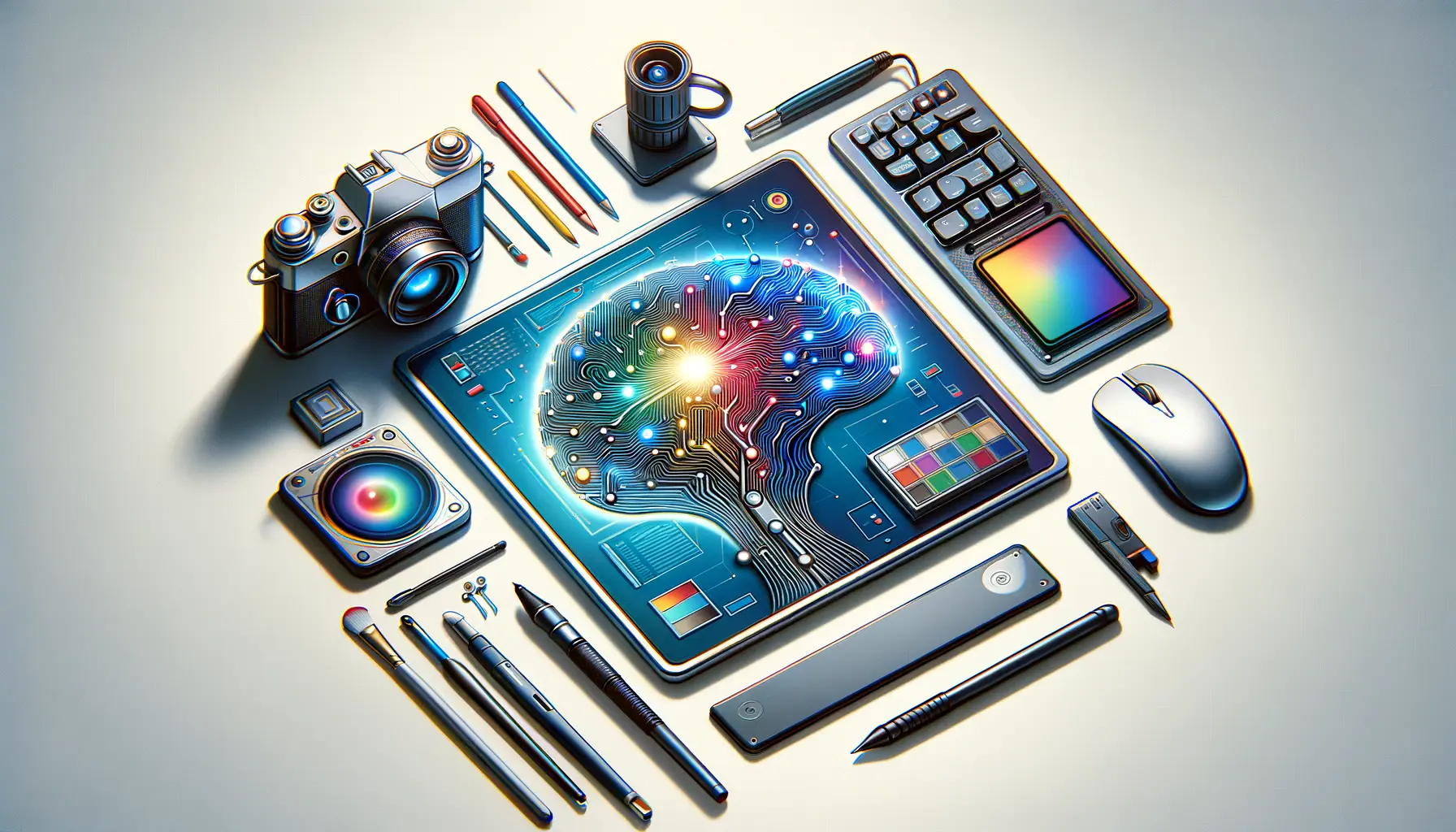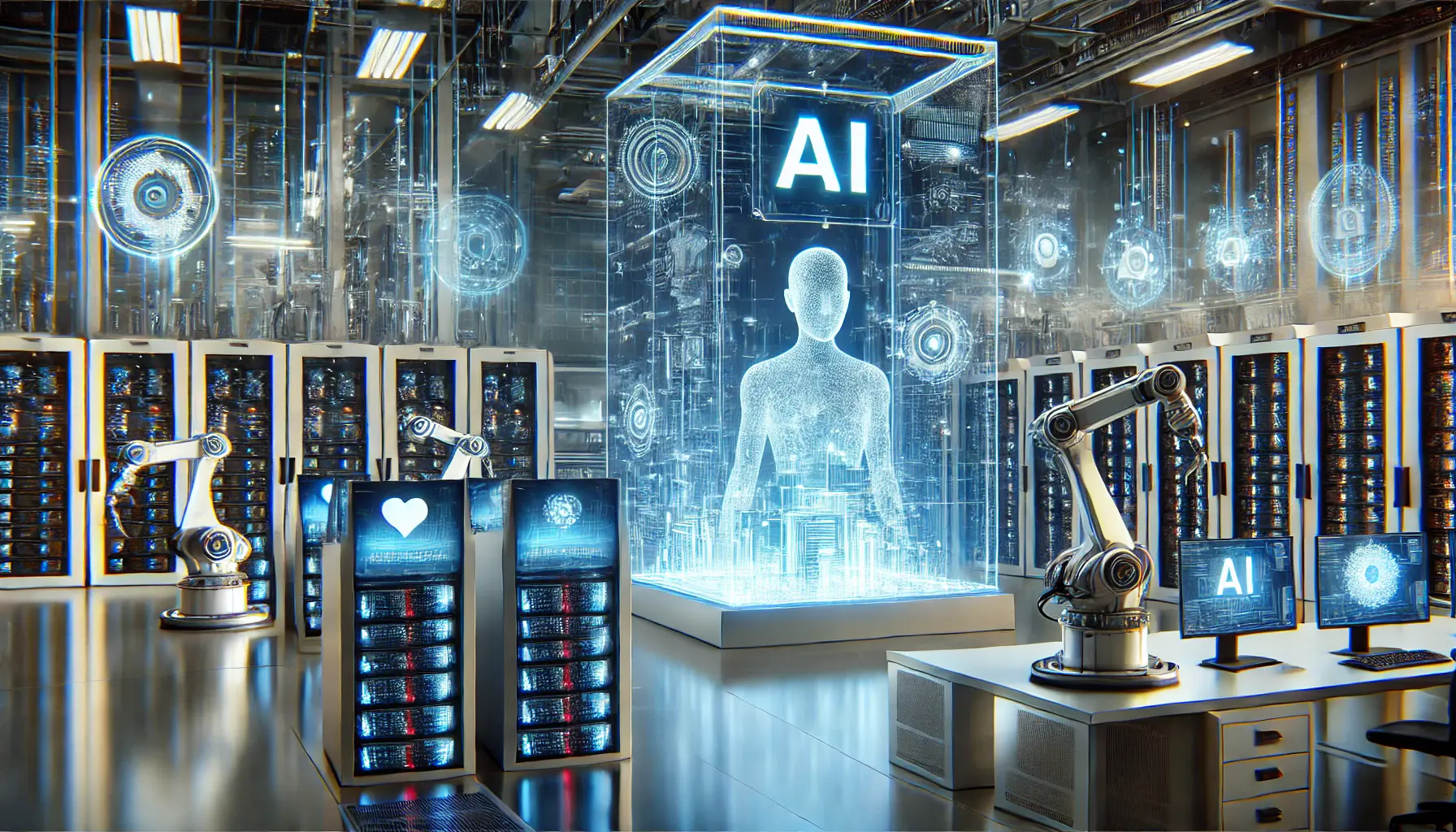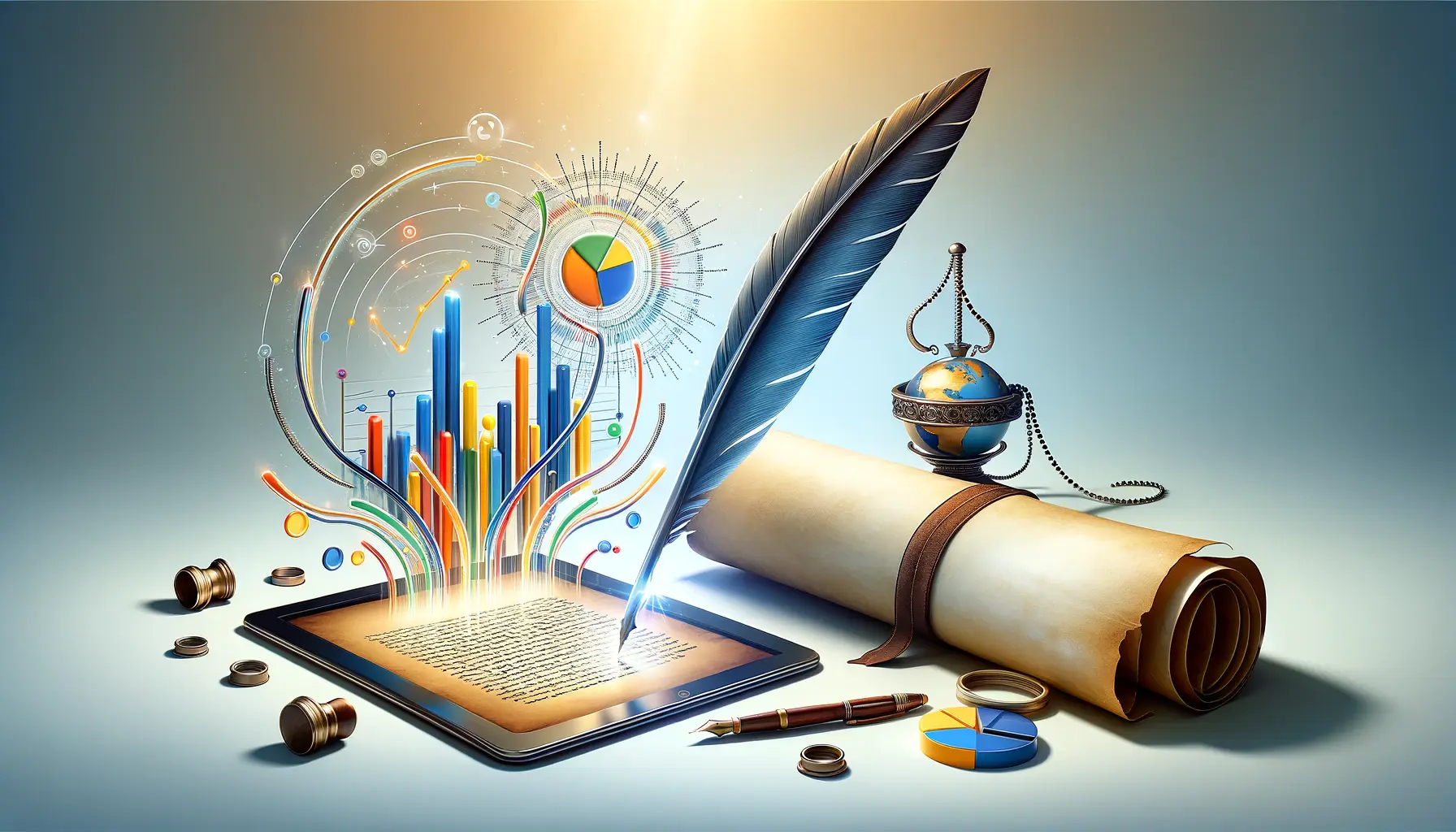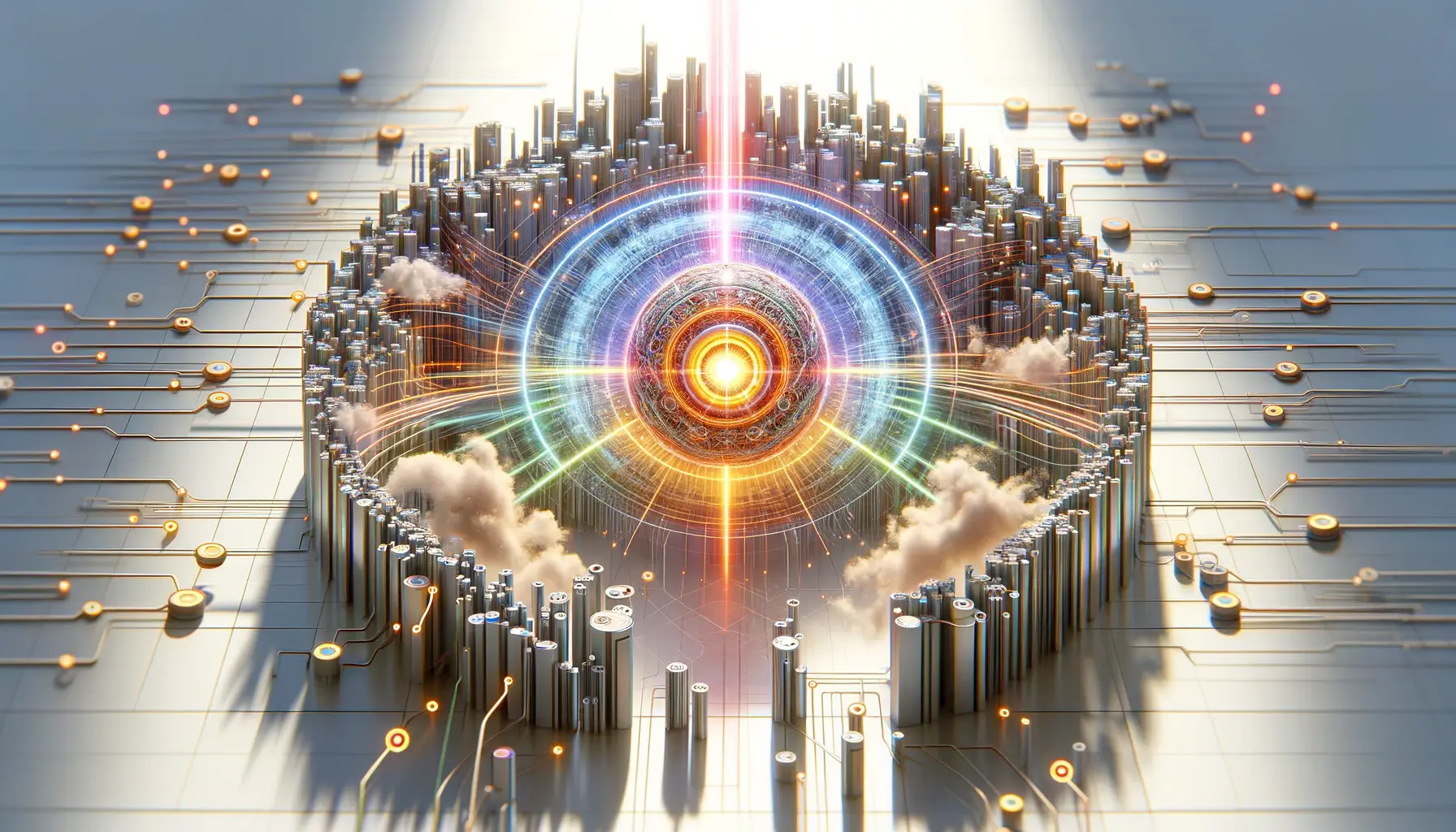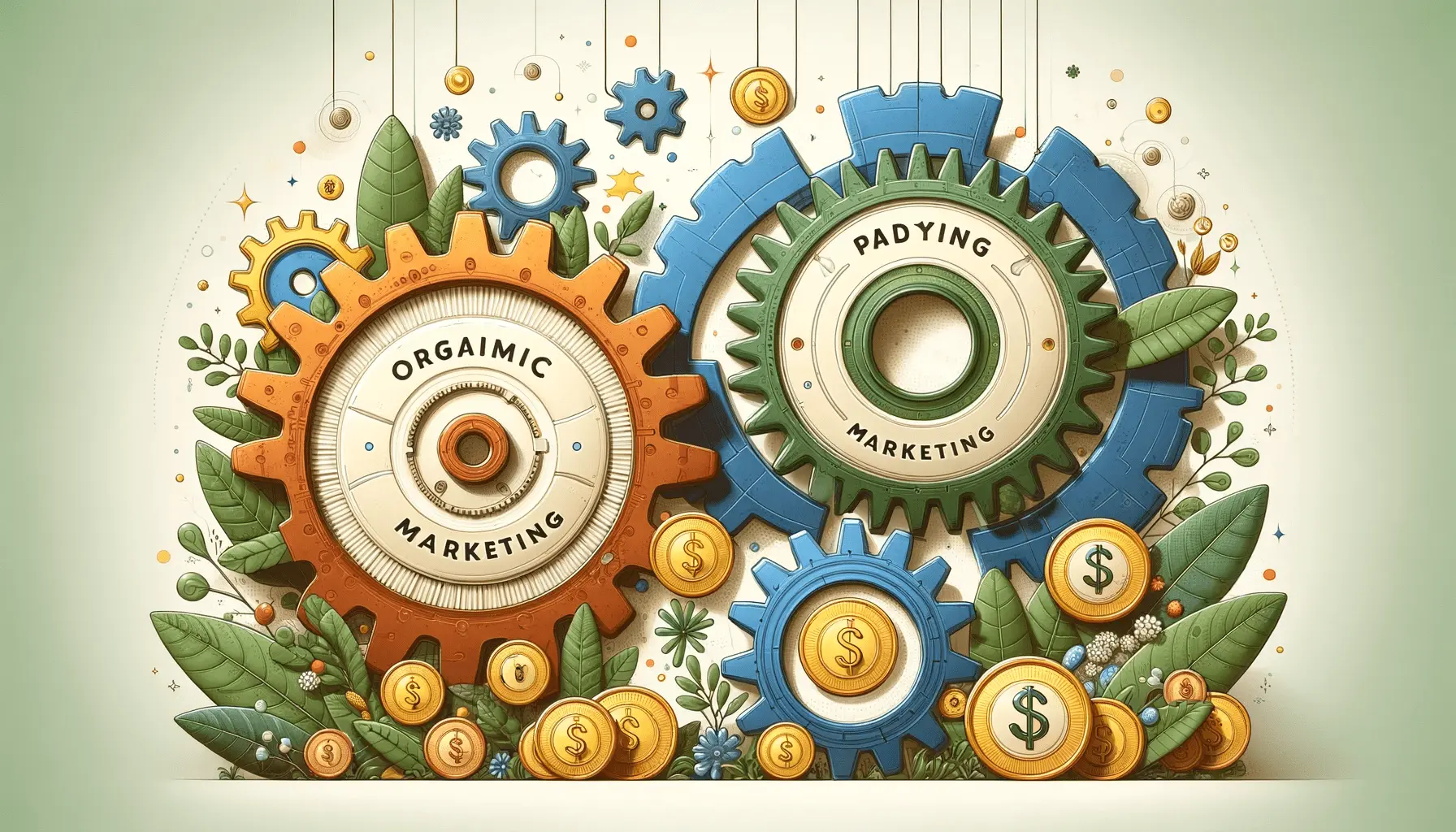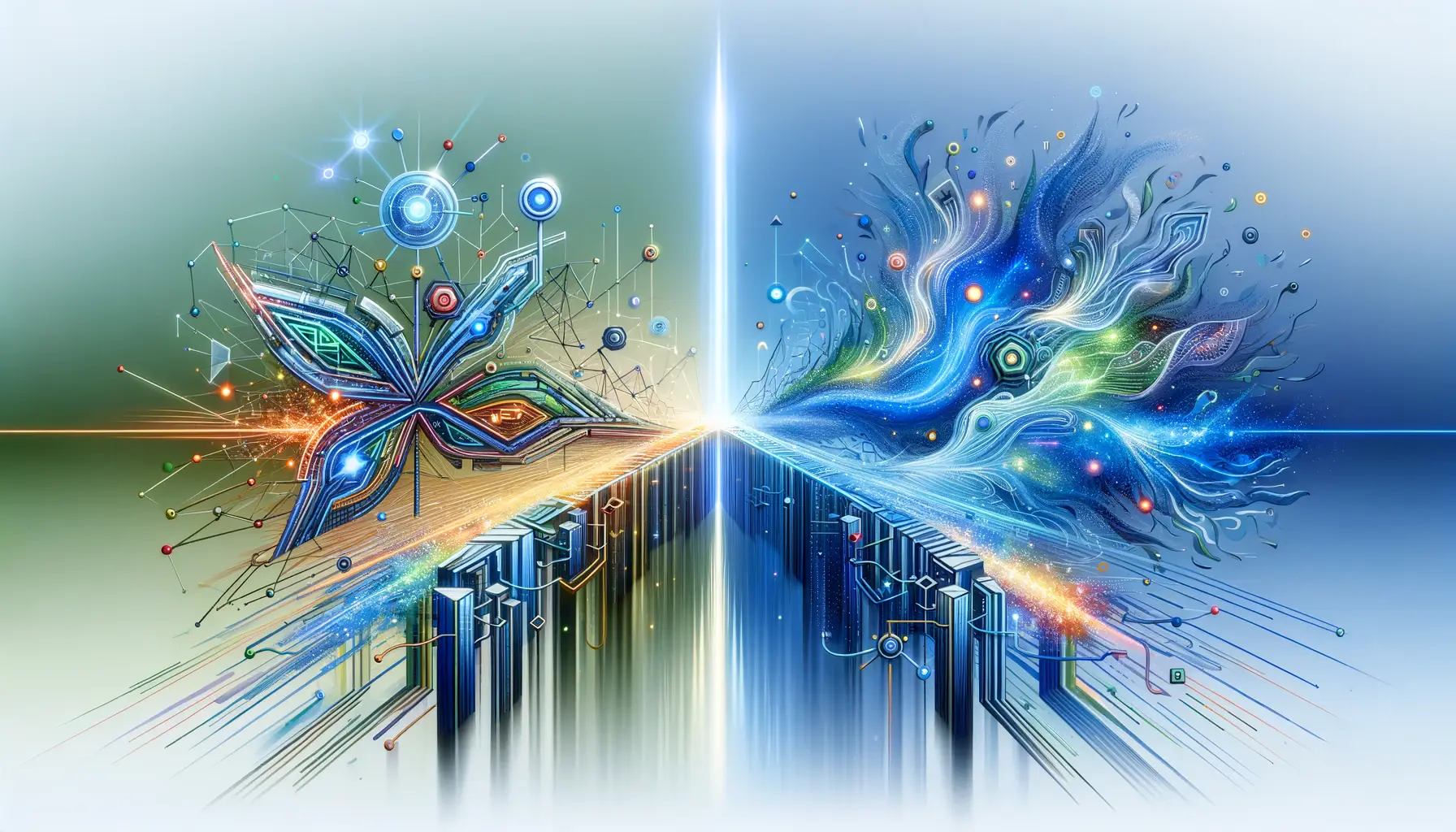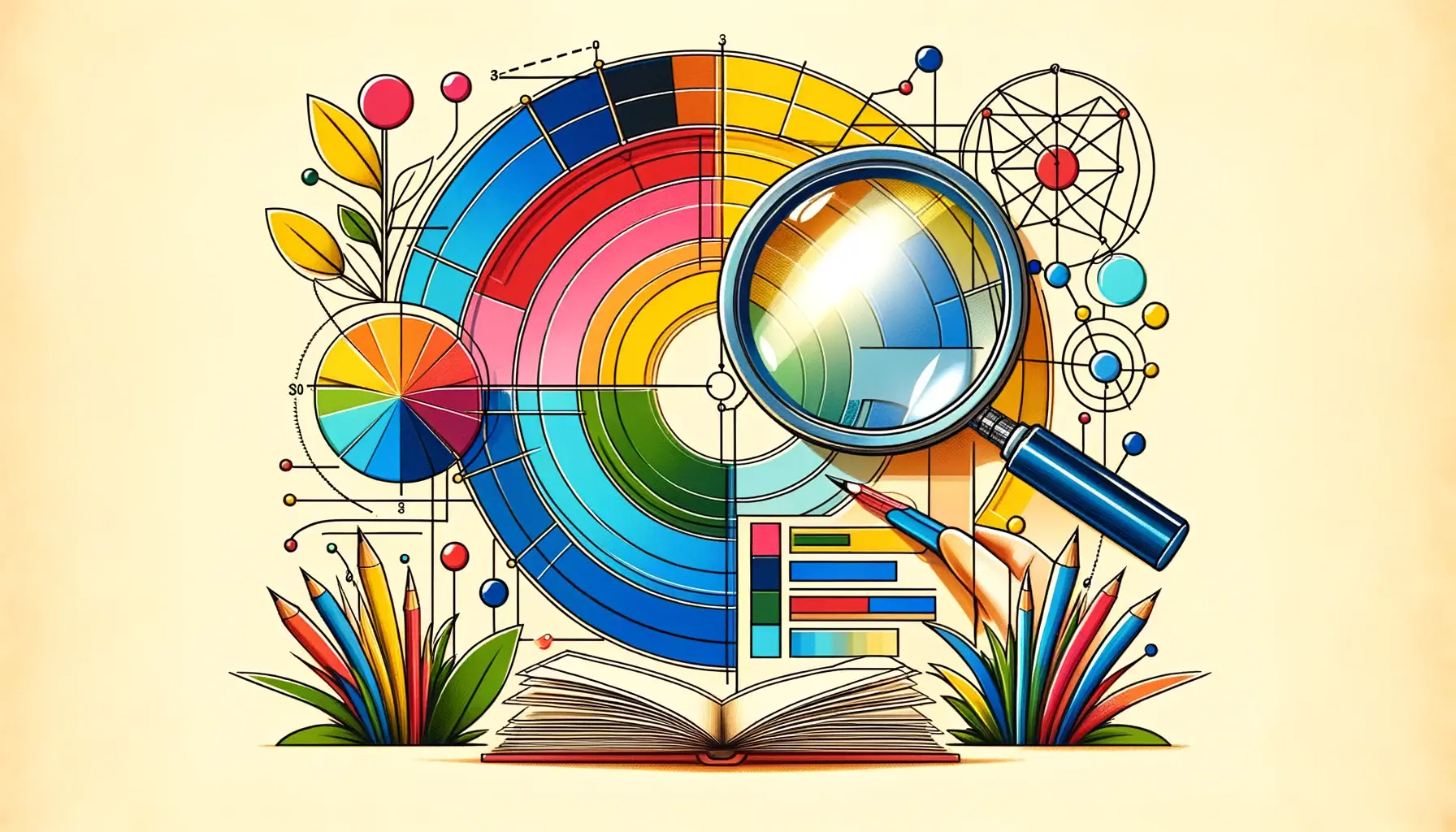The digital landscape is continuously evolving, with artificial intelligence (AI) at the forefront of this transformation.
Among the myriad of innovations, Google’s Bard stands out as a pioneering force, reshaping the way content creators approach their craft.
This collaboration between Google’s Bard and content creators marks a significant milestone in the realm of digital content creation, offering new avenues for creativity, efficiency, and engagement.
At its core, the collaboration between Google’s Bard and content creators is about leveraging the power of AI to enhance the creative process.
Bard, with its advanced language models and deep learning capabilities, offers content creators a unique toolset to generate ideas, refine narratives, and even overcome writer’s block.
This partnership is not just about automation; it’s about augmenting human creativity with AI’s computational power, leading to a symbiotic relationship that pushes the boundaries of what’s possible in content creation.
- Understanding the Impact of Google’s Bard on Content Creation
- Strategies for Effective Collaboration with Bard
- Challenges and Solutions in AI-Driven Content Creation
- Optimizing Content for SEO with Bard’s Assistance
- Exploring Bard’s Role in Content Personalization
- Measuring the Success of Bard-Assisted Content
- Future Trends in AI and Content Creation
- Embracing the Future of Content Creation with Google’s Bard
- FAQs on Collaborating with Google’s Bard for Content Creation
Understanding the Impact of Google’s Bard on Content Creation
The integration of Google’s Bard into the content creation process has been a game-changer for many creators.
Bard’s ability to process and generate language-based content at an unprecedented scale offers a glimpse into the future of automated content creation.
This AI-driven approach not only streamlines the workflow but also introduces a level of versatility and innovation that was previously unattainable.
One of the key benefits of this collaboration is the significant reduction in time and effort required to produce high-quality content.
Bard’s proficiency in understanding context, generating ideas, and even suggesting edits allows creators to focus more on the creative aspects of their work rather than getting bogged down by the mechanics of writing.
This shift towards a more collaborative process with AI has the potential to elevate the quality of content available online, making it more informative, engaging, and tailored to the audience’s needs.
Enhancing Creativity and Efficiency
Google’s Bard is not just a tool for automating content creation; it’s a catalyst for creativity.
By providing suggestions, generating drafts, and offering insights based on vast data sets, Bard enables content creators to explore new ideas and perspectives that they might not have considered otherwise.
This can lead to more innovative and diverse content, enriching the digital ecosystem with fresh voices and unique stories.
Moreover, the efficiency gains from using Bard are undeniable.
Content creators can produce more content in less time, without compromising on quality.
This efficiency does not just benefit creators but also the platforms and audiences they serve.
With the ability to quickly adapt to trends and produce relevant content, creators can better engage their audience, fostering a more dynamic and interactive digital environment.
The collaboration between Google’s Bard and content creators is revolutionizing the content creation landscape, making it more innovative, efficient, and engaging.
In conclusion, the partnership between Google’s Bard and content creators is a testament to the transformative power of AI in the creative industries.
As this collaboration continues to evolve, it promises to unlock new possibilities for content creation, making the digital world a richer, more diverse, and engaging space for everyone.
Strategies for Effective Collaboration with Bard
The collaboration between content creators and Google’s Bard hinges on understanding and leveraging the AI’s capabilities effectively.
To maximize the benefits of this partnership, creators must adopt strategies that enhance their creative process while ensuring the content remains authentic and engaging.
Here are key strategies for effective collaboration with Bard:
Setting Clear Objectives
Before engaging with Bard, it’s crucial for creators to have a clear understanding of their objectives.
Whether it’s generating ideas, refining content, or enhancing readability, knowing what you want to achieve helps in directing the AI’s capabilities more effectively.
This focus ensures that the collaboration yields results that are aligned with the creator’s goals, making the content creation process more efficient and purpose-driven.
Creators should outline their objectives in terms of the topic, tone, and target audience of their content.
This clarity helps Bard to generate suggestions and content that are more closely aligned with the creator’s vision, resulting in a more cohesive and targeted piece of content.
Leveraging Bard’s Strengths
Understanding Bard’s strengths is key to harnessing its full potential.
Bard excels at generating ideas, providing data-driven insights, and suggesting content improvements based on language models.
Creators can leverage these strengths by:
- Using Bard for brainstorming sessions to overcome writer’s block and explore new content angles.
- Asking Bard for data and research insights to support their content with credible information.
- Utilizing Bard’s suggestions for language and structure improvements to enhance the readability and engagement of their content.
By aligning their content creation process with Bard’s capabilities, creators can produce more compelling, informative, and engaging content that resonates with their audience.
Iterative Collaboration
Effective collaboration with Bard is an iterative process.
Creators should not expect perfect results in the first draft.
Instead, they should view Bard as a collaborative partner in the creative process, where both the AI’s suggestions and the creator’s insights are refined over multiple iterations.
This approach allows for a more nuanced and polished piece of content that reflects the creator’s voice while benefiting from Bard’s computational creativity.
Engaging in an iterative process with Bard involves reviewing the AI-generated content, making adjustments, and seeking further suggestions.
This cycle of feedback and refinement helps in fine-tuning the content to better meet the creator’s objectives and the audience’s expectations.
Adopting a strategic approach to collaborating with Bard can significantly enhance the content creation process, making it more creative, efficient, and aligned with the creator’s goals.
In summary, effective collaboration with Google’s Bard requires a strategic approach that includes setting clear objectives, leveraging Bard’s strengths, and engaging in an iterative process.
By adopting these strategies, content creators can enhance their creative capabilities, produce high-quality content more efficiently, and engage their audience more effectively.
Challenges and Solutions in AI-Driven Content Creation
While the collaboration between Google’s Bard and content creators offers numerous benefits, it also presents certain challenges.
Navigating these challenges is crucial for content creators to maintain the integrity, originality, and quality of their work.
Here, we explore common challenges and propose practical solutions to ensure a productive partnership with Bard.
Maintaining Originality and Authenticity
One of the primary concerns with AI-driven content creation is the risk of losing the unique voice and authenticity that distinguishes human-created content.
As Bard generates content based on vast datasets, there’s a possibility for content to feel generic or lack a personal touch.
To address this, creators should use Bard as a tool for inspiration and assistance rather than relying on it to produce entire pieces of content.
Integrating personal insights, experiences, and stylistic preferences into Bard-generated content can help maintain originality and authenticity.
Additionally, customizing the AI’s outputs to reflect the creator’s unique voice is essential for producing content that resonates with the audience.
Ensuring Accuracy and Credibility
Another challenge is ensuring the accuracy and credibility of the information generated by Bard.
Given that AI models can sometimes produce content based on outdated or incorrect data, creators must verify the facts and data provided by Bard.
Creators can overcome this challenge by cross-referencing Bard’s information with credible sources and incorporating up-to-date research into their content.
This not only enhances the credibility of the content but also enriches it with valuable insights that Bard might not have access to.
Employing a critical eye and fact-checking are essential practices for creators working with AI-driven content generation tools.
Overcoming Overreliance on AI
Overreliance on Bard for content creation can lead to a lack of skill development and creativity among creators.
While Bard is a powerful tool, it’s important for creators to continue honing their writing skills and creativity to ensure their content remains engaging and dynamic.
To mitigate this, creators should balance their use of Bard with traditional content creation practices.
This includes writing content without AI assistance, engaging in creative exercises, and continuously learning about their field.
Such practices help maintain a healthy balance between leveraging AI’s capabilities and nurturing human creativity.
While challenges exist in AI-driven content creation, adopting a balanced approach and employing practical solutions can help content creators effectively navigate these challenges, ensuring their content remains original, credible, and engaging.
In conclusion, the collaboration between Google’s Bard and content creators is a powerful alliance that, when navigated wisely, can revolutionize content creation.
By addressing the challenges of maintaining originality, ensuring accuracy, and avoiding overreliance on AI, creators can leverage Bard to its fullest potential while preserving the essence of human creativity.
Optimizing Content for SEO with Bard’s Assistance
In the digital age, the visibility of content on search engines is crucial for reaching a wider audience.
Google’s Bard, with its advanced understanding of language and SEO principles, can be a valuable ally for content creators looking to optimize their content for search engines.
Here’s how to effectively use Bard for SEO optimization:
Identifying Target Keywords
One of the first steps in SEO optimization is identifying the right target keywords for your content.
Bard can assist in this process by analyzing current trends, search queries, and related topics to suggest relevant keywords that can increase your content’s visibility.
Creators should:
- Ask Bard for keyword suggestions based on the content’s topic and audience.
- Use Bard to understand the search intent behind the keywords to tailor the content accordingly.
- Incorporate the suggested keywords naturally into the content, ensuring they align with the narrative and flow.
Improving Content Structure for SEO
The structure of your content plays a significant role in its SEO performance.
Bard can provide recommendations on structuring your content in a way that’s both user-friendly and search engine optimized.
Key strategies include:
- Using Bard to suggest headings and subheadings that incorporate target keywords.
- Asking Bard for advice on creating a logical flow that guides readers through the content, enhancing user engagement and dwell time.
- Employing Bard’s insights to ensure that paragraphs are concise, focused, and include varied sentence structures for readability.
Enhancing Content Quality and Relevance
Quality and relevance are paramount for SEO success.
Bard can help ensure that your content is not only optimized for keywords but also provides value to your audience.
To achieve this, creators can:
- Leverage Bard to generate content ideas that are timely, informative, and aligned with the audience’s interests.
- Use Bard to refine content, making it more engaging and informative by incorporating data, statistics, and real-life examples.
- Ask Bard for feedback on the content’s relevance and suggestions for improvement, ensuring it meets the high standards expected by search engines and readers alike.
By integrating Bard’s capabilities into your SEO strategy, you can enhance your content’s visibility, engagement, and overall performance on search engines.
In summary, leveraging Google’s Bard for SEO optimization offers content creators a competitive edge.
By assisting in keyword identification, improving content structure, and enhancing quality and relevance, Bard enables creators to produce content that is not only valuable to their audience but also performs well in search engine rankings.
Exploring Bard’s Role in Content Personalization
In today’s digital ecosystem, content personalization has become a key factor in engaging and retaining audiences.
Google’s Bard, with its advanced AI capabilities, plays a pivotal role in enabling content creators to tailor their offerings to meet the unique preferences and interests of their audience.
Here’s how Bard is transforming the landscape of personalized content:
Understanding Audience Preferences
At the heart of content personalization is a deep understanding of the audience’s preferences, behaviors, and interests.
Bard can analyze vast amounts of data to identify trends and patterns that can inform content personalization strategies.
Creators can leverage Bard to:
- Gather insights into the topics, formats, and styles that resonate most with their target audience.
- Identify gaps in existing content offerings that personalized content can fill.
- Use Bard’s analysis to segment the audience based on their preferences, enabling more targeted content creation.
Generating Personalized Content Ideas
Generating ideas for personalized content can be challenging, but Bard’s AI engine simplifies this process by suggesting ideas based on audience insights and current trends.
Strategies for leveraging Bard include:
- Asking Bard for content ideas that cater to different audience segments.
- Using Bard to explore new angles on popular topics, ensuring content feels fresh and tailored to the audience’s evolving interests.
- Incorporating Bard’s suggestions to diversify content formats, such as articles, videos, and infographics, to match the audience’s consumption preferences.
Enhancing Content Engagement Through Personalization
The ultimate goal of content personalization is to enhance engagement by making content more relevant and appealing to the audience.
Bard’s capabilities can be instrumental in achieving this goal.
Effective tactics include:
- Utilizing Bard to fine-tune content based on real-time feedback and engagement metrics, ensuring it remains highly relevant to the audience.
- Employing Bard’s insights to adjust the tone, style, and presentation of content to better align with the audience’s preferences.
- Leveraging Bard to create dynamic content that adapts to the audience’s changing interests and behaviors over time.
Bard’s role in content personalization is transformative, enabling creators to produce content that is not only relevant and engaging but also deeply resonant with the audience’s unique preferences and interests.
In conclusion, leveraging Google’s Bard for content personalization offers a powerful means to connect with the audience on a more personal level.
By understanding audience preferences, generating personalized content ideas, and enhancing content engagement, Bard empowers creators to deliver content that truly stands out in the crowded digital landscape.
Measuring the Success of Bard-Assisted Content
In the realm of digital content creation, the ability to measure success and adapt strategies accordingly is crucial.
With the integration of Google’s Bard into the content creation process, new metrics and methods for evaluating success have emerged.
Understanding how to effectively measure the impact of Bard-assisted content can help creators refine their approach and achieve better outcomes.
Key Performance Indicators (KPIs) for Bard-Assisted Content
To gauge the success of content created with Bard’s assistance, it’s important to focus on specific KPIs that reflect the content’s performance and audience engagement.
These KPIs include:
- Engagement Rates: Track likes, shares, comments, and time spent on page to assess how engaging the content is for the audience.
- Traffic Sources: Analyze where your audience is coming from (organic search, social media, direct visits) to understand how Bard-assisted SEO and content strategies are performing.
- Conversion Rates: Measure how effectively the content drives actions, such as sign-ups, downloads, or purchases, indicating the content’s impact on business goals.
By monitoring these KPIs, creators can identify what works well and where there’s room for improvement, allowing them to adjust their content strategy for better results.
Utilizing Analytics Tools
Analytics tools play a vital role in measuring the success of Bard-assisted content.
These tools can provide detailed insights into how the content is performing across various metrics.
Creators should:
- Use analytics platforms like Google Analytics to track engagement and conversion metrics.
- Leverage social media analytics to understand how Bard-assisted content performs on different platforms.
- Employ SEO tools to monitor keyword rankings and visibility improvements resulting from Bard-assisted optimization efforts.
These tools can help creators make data-driven decisions to enhance the effectiveness of their Bard-assisted content.
Adapting Content Strategies Based on Insights
The ultimate goal of measuring the success of Bard-assisted content is to gather insights that can inform future content strategies.
Based on the data collected, creators should:
- Identify high-performing content and analyze what made it successful to replicate those elements in future pieces.
- Adjust content topics, formats, and distribution channels based on audience preferences and engagement patterns.
- Refine SEO strategies by focusing on keywords and optimization techniques that have proven to drive traffic and engagement.
By continuously measuring, analyzing, and adapting, creators can enhance the effectiveness of their Bard-assisted content, ensuring it resonates with their audience and meets their strategic goals.
Effective measurement and adaptation are key to maximizing the benefits of Bard-assisted content creation, leading to more engaged audiences and better content performance.
In summary, measuring the success of Bard-assisted content involves focusing on key performance indicators, utilizing analytics tools for in-depth insights, and adapting content strategies based on data-driven insights.
This approach enables creators to continually improve their content, making it more engaging, relevant, and effective in achieving their goals.
Future Trends in AI and Content Creation
The collaboration between Google’s Bard and content creators is just the beginning of a transformative journey in the digital content landscape.
As AI technology continues to evolve, future trends in content creation are set to redefine the ways in which content is conceived, produced, and consumed.
Here, we explore the potential future trends that could shape the next era of AI-driven content creation.
Increased Personalization and Interactivity
One of the key trends on the horizon is the move towards even more personalized and interactive content.
AI systems like Bard will become more adept at understanding individual user preferences, behaviors, and contexts, enabling content creators to craft experiences that are uniquely tailored to each audience member.
This could include dynamic content that adapts in real-time based on user interactions or personalized storytelling that resonates on a more personal level.
Furthermore, interactivity will play a larger role in content, with AI facilitating more engaging and immersive experiences.
From interactive articles to AI-driven virtual reality experiences, the possibilities for engaging audiences in new and innovative ways are boundless.
Automation of More Complex Content Tasks
As AI technology advances, we can expect Bard and similar tools to take on more complex content creation tasks.
This could range from producing entire articles or videos based on brief inputs to generating sophisticated data visualizations or even composing music.
The automation of these tasks will free up creators to focus on strategy, creativity, and storytelling, pushing the boundaries of what’s possible in content creation.
Moreover, AI’s role in content editing and refinement will become more nuanced, offering more advanced suggestions for improving clarity, engagement, and SEO performance.
This will ensure that content not only reaches a wide audience but also makes a meaningful impact.
Collaborative AI-Human Content Creation Teams
The future of content creation lies in the collaboration between AI and humans, where each brings its unique strengths to the table.
AI can handle data analysis, trend prediction, and initial content generation, while humans can infuse creativity, emotional intelligence, and ethical considerations into the content.
This partnership will lead to the creation of more compelling, relevant, and ethically sound content.
This collaborative model will also extend to the way content is conceptualized and produced, with AI providing insights and suggestions that inspire human creators to explore new ideas and formats.
The result will be a richer, more diverse content ecosystem that better serves the needs and interests of audiences worldwide.
The future of AI-driven content creation is bright, with trends pointing towards increased personalization, automation of complex tasks, and collaborative AI-human teams. These developments promise to enhance the creativity, efficiency, and impact of content creation, ushering in a new era of digital storytelling.
In conclusion, as we look towards the future, it’s clear that AI will play an increasingly central role in content creation.
The collaboration between tools like Google’s Bard and content creators is set to evolve, bringing about innovative trends that will continue to reshape the digital content landscape.
By staying ahead of these trends, creators can leverage AI to its fullest potential, creating content that is not only engaging and relevant but also deeply resonant with audiences around the globe.
Embracing the Future of Content Creation with Google’s Bard
The journey through the evolving landscape of AI-driven content creation, particularly with Google’s Bard, reveals a future where the synergy between human creativity and artificial intelligence opens new horizons for content creators.
This collaboration is not merely a technological advancement; it’s a paradigm shift in how content is conceptualized, created, and consumed.
As we stand on the brink of this new era, it’s essential to reflect on the key insights and prepare for the transformative changes ahead.
The Symbiosis of AI and Human Creativity
The collaboration between Google’s Bard and content creators underscores a burgeoning era where creativity is no longer confined to the human mind.
Bard, with its vast data processing capabilities and deep learning algorithms, offers a complementary force to human creativity, enabling a richer, more diverse content creation process.
This partnership promises to elevate the quality of content available, making it more informative, engaging, and tailored to the audience’s needs.
The future of content creation lies in this symbiosis, where AI enhances human creativity, leading to unprecedented levels of innovation and personalization in content.
Challenges and Opportunities Ahead
While the collaboration with Google’s Bard presents vast opportunities, it also brings challenges that content creators must navigate.
Issues such as maintaining originality, ensuring accuracy, and balancing the use of AI with human input are paramount.
However, these challenges also offer opportunities for growth and innovation.
By adopting strategies to effectively collaborate with Bard, creators can overcome these hurdles, leading to content that is not only optimized for SEO but also resonates deeply with audiences through personalization and engagement.
- Adapting to the evolving AI technology to maintain the authenticity and quality of content.
- Leveraging Bard’s capabilities for SEO optimization and audience engagement.
- Continuously learning and evolving to stay ahead in the dynamic content creation landscape.
Looking Towards a Collaborative Future
The future of content creation with Google’s Bard is not just about leveraging AI for efficiency and innovation; it’s about forging a new path where AI and humans collaborate seamlessly.
This future is characterized by content that is more personalized, interactive, and engaging, reflecting the unique preferences and interests of each audience member.
As we move forward, the role of content creators will evolve, requiring a balance between leveraging AI’s analytical and predictive capabilities and infusing content with human insight, creativity, and ethical considerations.
In conclusion, the collaboration between Google’s Bard and content creators is just the beginning of a transformative journey in content creation.
As we embrace this future, the key to success lies in our ability to adapt, innovate, and maintain the human touch in our content.
By doing so, we can unlock the full potential of AI-driven content creation, creating a digital ecosystem that is richer, more diverse, and more engaging than ever before.
FAQs on Collaborating with Google’s Bard for Content Creation
Explore commonly asked questions about enhancing your content creation process with Google’s Bard.
Google Bard offers content generation, question answering, summarization, and tone adjustment to aid content creators.
Bard integrates with Gmail, Docs, Drive, and more, streamlining content creation and collaboration.
Currently, Bard’s learning algorithm does not personalize responses based on past interactions.
The Gemini update introduces advanced collaboration features and a mobile app for on-the-go content creation.
By blending Bard’s suggestions with personal insights and creativity, ensuring each piece remains unique.
Be mindful of Bard’s occasional reliance on outdated data and ensure fact-checking for accuracy.
Bard can suggest relevant keywords and content structures to improve SEO performance effectively.
Yes, Bard can now summarize YouTube video content, aiding in the creation of related textual content.
